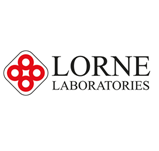Red Book Standards
3 April 2017
What is the Red Book?
The ‘Red Book’, is the colloquial name for the ‘Guidelines for the Blood Transfusion Services in the United Kingdom’. This book defines guidelines for all reagents produced by UK based manufacturers of blood transfusion reagents and stipulates the minimum requirements of blood that is used for therapeutic and diagnostic purposes. The book has undergone several changes and is currently on its 8th edition, which was published in March 2013 by TSO (The Stationery Office).
How it Originated
The guidelines were first published in 1990 by Her Majesty’s Stationery Office (HMSO) and were compiled by experts from the Regional Transfusion Centres and the National Institute for Biological Standards and Control. They contain best practices, and standards met by the products and describe technical details of the processes involved as well as stating legal requirements, which were introduced in 2005 under the Blood Safety and Quality Regulations.
How it Keeps Processes Safe
The aim of the guidelines is to ensure the safety of blood donations and blood transfusions in the UK for both donors and patients. Due to new discoveries in the medical sector these guidelines are likely to change over time and these changed will be detailed on the JPAC website.
Although these guidelines are not legally binding, they do reflect best practice as professionals in the field developed them. This means it can be taken into account by the UK judiciary.
Blood Reagent Manufacturing Rules
The Red Book details that it is essential for blood grouping reagents to be prepared using reliable manufacturing procedures that are consistently producing safe products. Besides compliance to the guidelines stipulated in the Red Book, blood grouping reagents shall also comply with the requirements of the EU Directive on in vitro diagnostic medical devices.
The Red Book provides a grading system to help with the manual reading of test results and also defines minimum test requirements for blood grouping reagents.
The Red Book is used by all UK manufacturers of blood grouping reagents and by all UK based Blood Transfusion Services to ensure that blood transfusion are carried out safely.
Transfusion 10 Commandments
The following principles help keep safe and effective transfusion practices across the country and form the basis of the Red Book Handbook.
- Transfusions should only be used when the benefits outweigh the risks and if there are no other alternatives.
- Results of Laboratory tests are not the only deciding factor when opting for transfusions.
- Decisions on transfusions should be based on clinical assessment reinforced by evidence-based clinical guidelines.
- There is no universal transfusion trigger meaning not all anaemic patients require transfusions.
- Discuss the benefits and risks of transfusions with the patient and get consent prior to transfusion.
- The purpose behind the transfusion should be documented in the patient’s clinical records.
- Good communication and teamwork is essential when dealing with blood components for heamorrhages.
- The patients identity must be checked and an ID band or similar must be present on the patient that details their name, date of birth and unique patient ID number. This should be checked at every stage of the transfusion process, as it is needed to match blood packs. Any doubt or discrepancies in this, the transfusion must not go ahead as it could be fatal to the patient.
- Patients must be monitored closely during the transfusion process.
- Professionals undertaking the transfusion must have undergone proper education and training in order to keep the transfusion process safe.
The Red Book is there to keep all blood transfusions products and processes safe to help eliminate fatalities within the blood transfusion industry.
To ensure your blood transfusions are kept safe, it is important to look for products that comply with the Red Book standards.
At Lorne Laboratories all our blood grouping reagents and red cell products comply with the UK Red Book Standards to ensure safe blood transfusions.
< Back to blog list

Share





